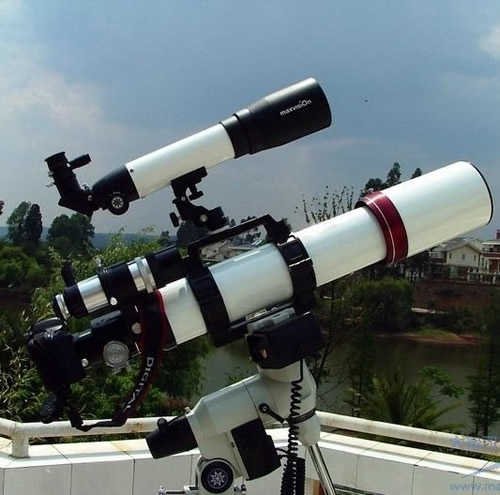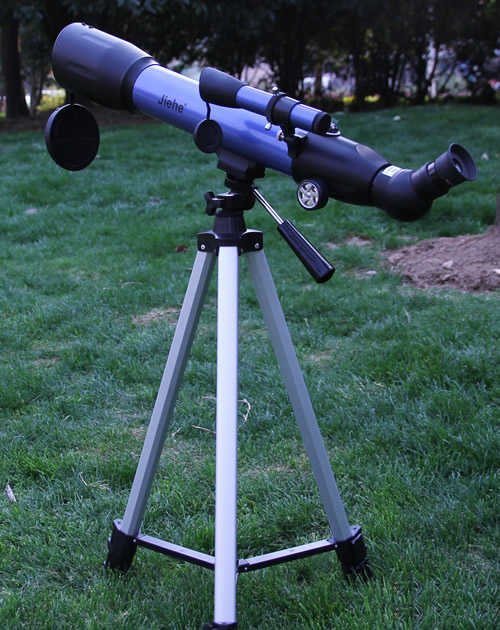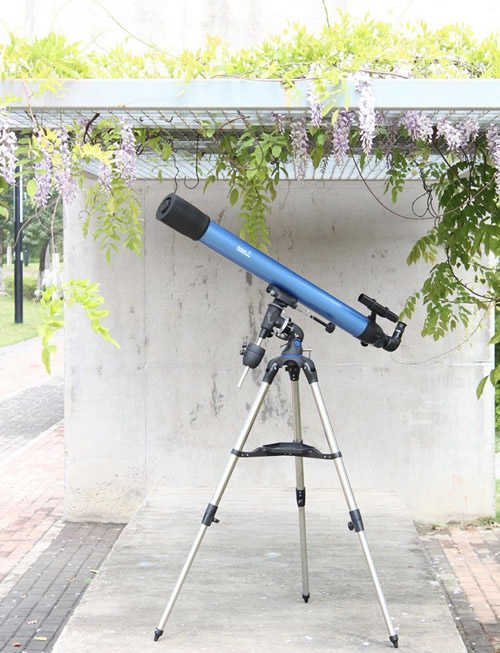[Use of astronomical telescope] How to use the astronomical telescope to use the correct use step and guide
[Use of astronomical Telescope] How to use the astronomical Telescope to use the correct use step and guide

1. Install a astronomical Telescope according to the instructions.
2. Regarding the focus of the Telescope and the calibration of the cross -line mirror

Loose two fastening screws on the eyepiece.Take out the low -duty mirror and put it on the eyepiece to pick up the cylinder, and then tighten the screw.The adjustment of the focusing knob can obtain a fuzzy image of an object A in the distance, and then slowly adjust the coke knob back and forth until the object image is clear.The Telescope has accurately adjusted the focal length, and now it can be observed with a star -seeking mirror.If the astrology mirror is not at the focal length, turn the eye mirror until a clear scene appears.When the object of object A you see on the Telescope is not in the center of the star mirrors, according to the following method: tighten or release the screw on the star -seeking mirror support, so that the star -seeking mirror up and down, left and right workers, left and right workers, left and right workers, left and right workMove obliquely.When the object of the object A appears in the center of the cross line, your star -seeking mirror is ready, and finally the three screws are tightened.Then replace the low -power mirror with a high -power mirror and repeat the above program.If the center of the image observed under the maximum mirror and the cross -line center of the star -seeking mirror, your star -seeking mirror is adjusted.Now you can quickly find the celestial body you want to observe.In extremely special circumstances, star -seeking mirrors may need to be adjusted.
3. precautions

A. Under any circumstances, first look for objects with a star -seeking mirror, because the perspective of the star -seeking mirror is greater, which can greatly accelerate your coarse tone.
B. Under normal circumstances, first install a low multiplier mirror to gradually increase the multiple you need, and you need to make the necessary focus when you change the mirror.
C. Don't be troubled by the upper and lower, left and right images that you see, this is a normal situation for astronomical Telescopes.
4. Effective observation notice
If the Telescope gets outdoors for the first time in air with lower indoor temperature, it must be used for a few minutes-because the temperature difference will make the lens blindfold.This phenomenon will disappear after 15-20 minutes.If your eyelids or fingers touch the eyepiece, the cloth that can't afford the hair will be gently wiped to see the mirror to prevent blurred images.It takes about 30 minutes to enlarge your pupils to adapt to darkness, so use a Telescope at night. After half an hour, you can see a much dark celestial body.
5. Various factors that may affect the observation results
Observation results are not all taken in the optical properties of the Telescope, and many factors also affect the quality of the image.
A. The atmosphere surrounded by the earth is always moving. This kind of atmospheric movement and rotation will cause bad images at a high rate. Perhaps after a few nights, the observation will improve.
B. The heat on the surface of the earth will also cause the fluctuations of the air and make the image distort and deform, resulting in poor observation.
C. The observation angle of the Telescope and the star and horizon has a great impact on the observation effect: if the star body is close to the horizon, the goal will be blurred.
D. Pollution of light sources: use your Telescope (such as under street lights, under room Lights, etc.) as much as possible in a light -free environment, high -mortar astronomical Telescope is very sensitive to light.Even more obvious, it seems that many stars will disappear over the urban area.
E. Moonlight may also be another factor that affects observation. The dazzling full moon or bright moonlight will blur the nearby stars or planets, and the moon itself is the best observation state between darkness and Tianming.
f. Try to avoid observation from opening the window (let alone observation of closed windows), especially in the cold season, the indoor and outer temperature difference can be worse, which will make the observation quality worst.
G. The cloud layer accumulated in the sky cannot penetrate the observation, but this cloud will often move.
H, star flashes are caused by air convection, which will also affect observation.
Remember, in any case, do not directly observe the sun through a star -seeking mirror or main lens barrel, otherwise it will seriously damage your eyes.